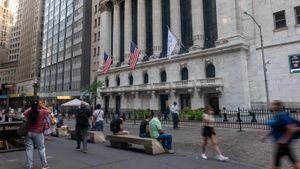On Sunday evening, the Tuscany region of Italy was shaken by multiple earthquakes, prompting school closures for safety precautions. The most significant tremor registered at a magnitude of 3.2, occurring around 8:30 PM south of Siena, according to Italian authorities.
Residents of Siena, a city known for its rich medieval history and popularity among tourists, felt the tremors clearly and many took to the streets out of concern for potential damage to their homes. Despite reports of anxiety among the populace, initial assessments indicated no major damage from the quakes.
"We need to conduct structural inspections of the school buildings," stated Nicoletta Fabio, the mayor of Siena, emphasizing the authorities' commitment to student safety amid fears of possible structural weaknesses. Schools throughout the region remained closed on Monday as this inspection process began.
The seismic activity commenced shortly after 7:00 PM, with the strongest shocks felt primarily in Monteroni d’Arbia, approximately 10 kilometers from Siena. This area, characterized by its hilly landscapes and sparse population, experienced the highest intensity of the quakes, thereby causing heightened alarm among residents.
Only around 50,000 people reside in Siena, famed for its stunning Piazza del Campo and the Torre del Mangia. It boasts not just cultural heritage but also draws countless tourists annually, which adds another layer of complexity to local governance when such natural events occur. While the anxiety from these tremors can be unsettling, officials have reassured the public, reinforcing the message: safety is top priority.
The earthquake series has once again highlighted Tuscany's position within Italy's seismic zones. The region is located on the fault lines created by the African tectonic plate gradually drifting northward, thereby colliding with the Eurasian plate. Such geological movements are common, and seismic events, though mostly mild to moderate, do occur periodically.
The local response to earthquakes often includes immediate public safety measures, such as the closure of educational institutions and inspection regimes established to assess and confirm the integrity of buildings. The nighttime quakes led to heightened vigilance among local authorities as they strive to balance safety and routine educational activities.
"The closure of schools during this assessment period is necessary to guarantee the safety of our children," Mama Fabio reiterated, distinguishing her administration's priority during such emergencies. The decision, though likely met with mixed feelings from students — some elated for the day off, others anxious about potential home damage — reflects the gravity with which the local government treats such natural occurrences.
Experts have reiterated the importance of preparedness for such earthquakes, advising residents to remain alert to what they should do during seismic events. Information dissemination is key, as many residents may not be fully aware of the protocols to follow when tremors do occur.
Fortunately, as of now, no injuries have been reported, and the mayor has declared her intent to keep the public informed on any developments. Safety drills may be initiated as additional preventative measures to prepare communities for future events should they occur.
Similar seismic events were reported over the weekend, aligning with the earthquakes affecting the nearby Greek island of Santorini, prompting local authorities there to also close schools as safety precautions were enforced.
The consistent geological activity experienced by Tuscan residents serves as an important reminder of the region’s vulnerability to such natural occurrences. Seismologists recommend routine checks and preparedness plans for all community members, especially those residing and working within seismically active zones.
The aftermath of Sunday evening’s earthquakes has shown cooperation among local agencies and residents alike. Trust between officials and the public is key to effective management of such surprising events, and engagement from the people is equally significant for recovery and future safety preparedness.
While Siena’s storied streets remain quiet now, attention and alertness will remain heightened as schools assess for damage. Authorities encourage calm and patience as they navigate through this assessment phase and prioritize community safety, looking forward to resuming normal operations as soon as possible.
Siena may be known as one of the most beautiful medieval cities, but the swift response to seismic activity will also define how residents navigate their present reality.



